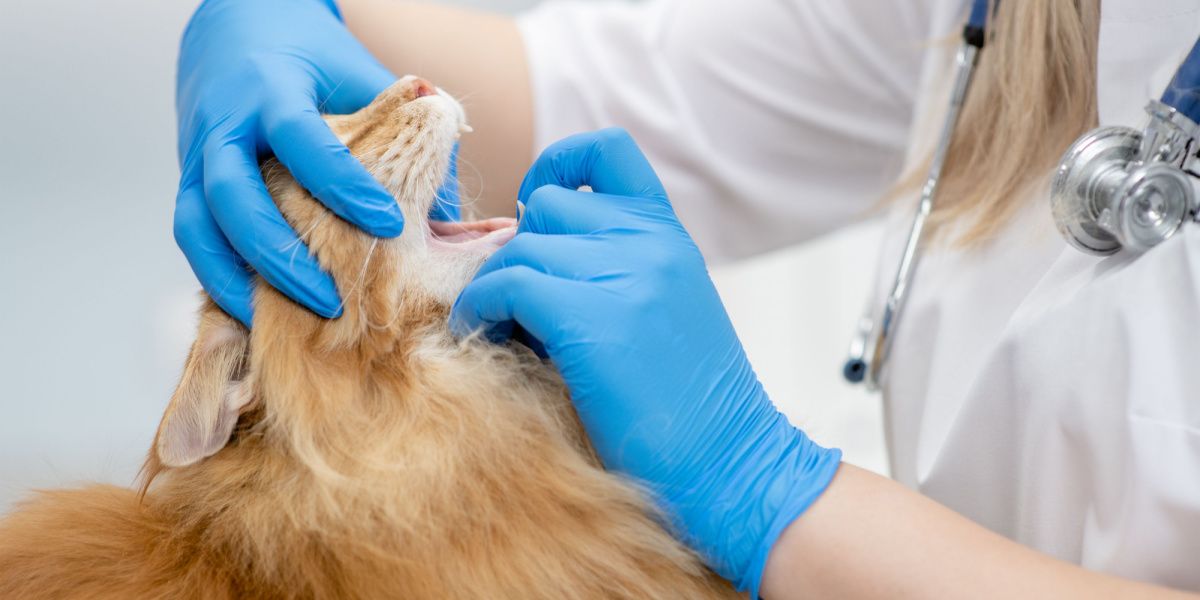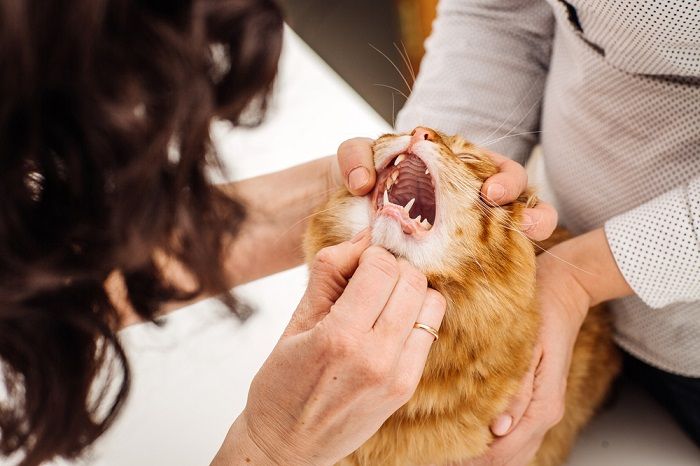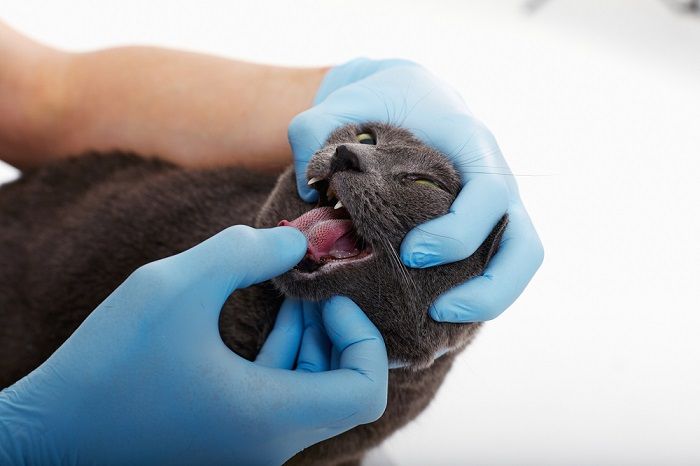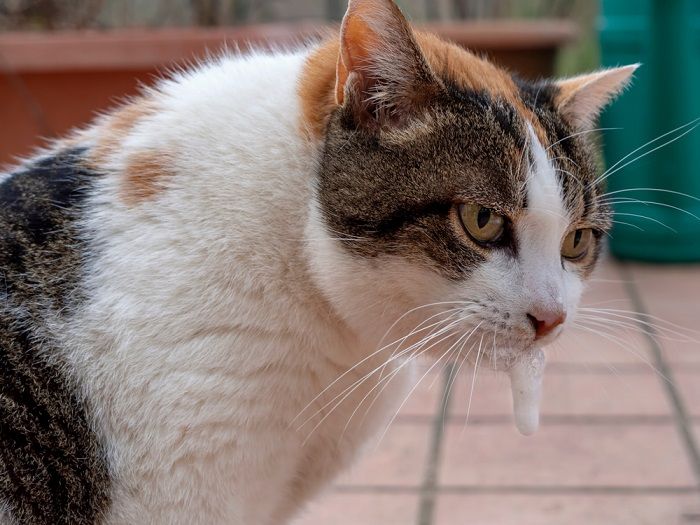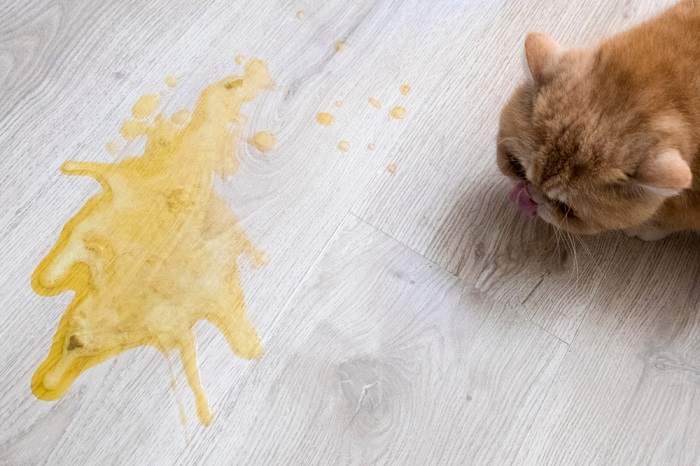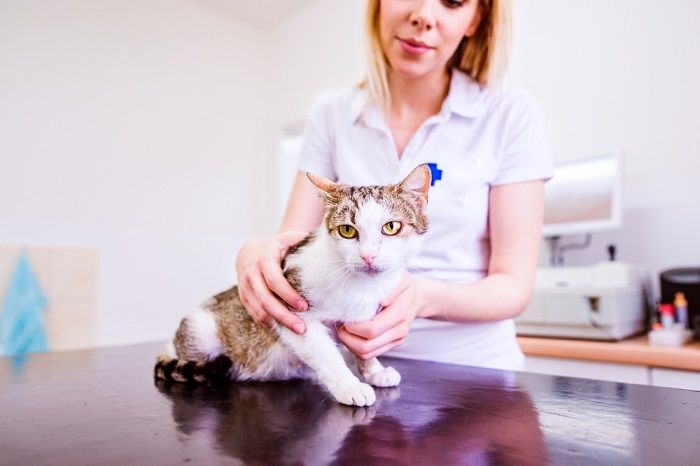The deliberate administration of drugs or chemicals to make your cat vomit (also known as induction of emesis) has long been used in veterinary medicine. It is usually carried out when a cat eats something that will potentially cause them harm if it is left in their stomach or allowed to travel further down their digestive tract. Inducing vomiting is a very useful trick vets have up our sleeves as it can literally save your cat’s life.
If your cat has eaten something toxic or poisonous, your veterinarian might want to make them vomit it back up. Voiding the contents of your cat's stomach could potentially save them from being poisoned. There are some circumstances where induction of vomiting is contraindicated—sometimes it can do more harm than good.Key Takeaways
One of the limitations of this procedure is that time is of the essence. It must be done very soon after your cat has ingested the substance—the window of opportunity is relatively small. We have a very short time frame of just two hours, so if your cat does eat something they shouldn’t, it’s very important to seek veterinary attention as soon as possible.
Why Is It Necessary To Make A Cat Vomit?
If your cat eats sometime dangerous, your vet will perform a full exam and decide if inducing vomiting is warranted.
Cats sometimes eat things they aren’t supposed to, either intentionally or by accident. Our homes are full of things that cats should not eat. Some are more obvious such as household cleaning products, but some foods are poisonous, as well as some human medications, and household plants and flowers. You can see a comprehensive list of substances that are toxic to cats on the ASPCA website.
Cats are usually more cautious than dogs when it comes to eating new things, but ingestion of toxic substances does still happen. It is important that cat owners to know what to do if their cat has eaten something poisonous.
Also Read: Poisoning In Cats: Causes, Symptoms, and Treatment
What To Do If Your Cat Eats Something They Shouldn’t
Toxic substances can sometimes cause nausea, gagging, and drooling.
Clinical signs vary greatly depending on what your cat has eaten. They might include things like hypersalivation, gagging/retching, lip smacking, twitching/convulsions, loss of consciousness, collapse, and seizures just to name a few.
If you see your cat ingest a harmful substance, take note of what they have eaten. The more information the better. If there is a label or packet, keep hold of this or take a photo to show to your veterinarian. Also, make a note of the quantity of whatever was eaten.
Next, call your veterinarian, they will be able to advise you over the phone on what action to take. Calling ahead also allows them to set up any equipment they will need prior to your arrival. Your veterinarian will check if certain substances are toxic, look up toxic doses, and advise on potential symptoms.
Sometimes it is not necessary to induce vomiting if a toxic dose has not been consumed. However, it is still always advisable to seek veterinary advice as there might be symptoms that need monitoring or addressing.
Occasionally, and only under strict veterinary instruction, it might be an option to induce emesis at home. This sort of scenario might occur if the owner cannot get to a vet practice within the two-hour time window, if they don’t have transport, or any other logistical issue.
If you can get your cat down to your veterinary clinic, this is the best option. They will be able to make your pet vomit there. Vets usually use one of three drugs:
- Dexmedetomidine
- Apomorphine
- Xylazine
No method is perfect and each drug has good points and bad points. Your vet will decide which one is most suitable based on the individual case and calculate the dose based on their body weight.
Also Read: Cleaning Up Cat Vomit Step-By-Step
Problems With Inducing Vomiting In Cats
Because cats don’t vomit as readily as dogs, it can be tricky to get them to do so in an emergency.
Unfortunately, induction of emesis in cats is not without its challenges. It is actually extremely difficult to make a cat vomit. It is much easier in dogs. Cats and dogs are wired differently when it comes to the mechanism that causes them to feel nauseous and vomit. For example, dogs respond very rapidly and effectively to the drug apomorphine.
If you inject the dog and you didn’t put newspaper on the floor beforehand, you can more or less guarantee that by the time you have located the newspaper and put it down, your floor will already be splattered with dog vomit. In cats, the receptors in the brain just aren’t as sensitive so we don’t see such a profound effect, unfortunately.
Another potential pitfall is that the majority of the drugs used to induce emesis in cats are primarily sedatives. The emetic response we see is usually a side effect. This means that some cats get given a dose and become heavily sedated, but don’t end up actually being sick. Luckily, there are reversal drugs for most of these sedatives but it still makes things tricky.
Also Read: The 6 Best Cat Food To Stop Vomiting
The Pitfalls Of DIY Vomiting Methods
It’s best to get your cat to a veterinarian, but if this isn’t possible your vet might give you instructions to induce vomiting at home.
Historically, the usual method for inducing vomiting at home was using a 3% solution of a chemical called hydrogen peroxide. Your vet will request that you syringe this slowly into the cat’s mouth.
Please note that this is only ever recommended in extreme circumstances, where face-to-face vet care is not an option. It should only be carried out strictly under veterinary direction. There is a great risk of causing severe ulceration of the esophagus and stomach using this method, so it is generally avoided.
Another one of the home remedies we generally don’t recommend is administering a solution of salt water. The results of this are variable. The main issue, however, is that giving a pet lots of salt in a short space of time can be toxic, too.
Additionally, a lot of the common toxic substances in cats have a main effect on the kidneys, especially in older cats. Some toxic substances (for example, lily plants, ibuprofen, or antifreeze) cause acute renal failure. If we then add in a truckload of extra salt for the kidneys to filter out of the cat’s bloodstream, it is very likely to cause further issues for the cat and slow down or halt any chances of recovery.
Also Read: The 6 Best Anti-Vomit Cat Bowls
When Is It Dangerous To Induce Vomiting?
In some cases, making your cat throw up does more harm than good.
Despite the benefits of being able to make your cat vomit, there are some circumstances when it should not be done. In these scenarios, inducing vomiting can actually do more damage than good. Instances when you should never induce vomiting include:
- If your cat has ingested bleach, any other caustic detergents or petrol-based substances, or button batteries, they should not be allowed to vomit. This is because the product is very likely to cause chemical burns on the lining of your cat’s esophagus and acute gastritis. Another danger is that they accidentally inhale the substance into the lungs, which causes something called aspiration pneumonia, which can cause severe health complications.
- If your cat has eaten a needle and thread, or any other sharp object or pointy foreign body. This sounds a bit random but you wouldn’t believe how common this is! If this is the case, and they are made to vomit, the needle could potentially cause damage to a part of the gut or any other internal organs or an area in their mouth. If the thread is still attached to the needle, it can cheese wire through internal structures or wrap around them causing intestinal strangulation damage.
- If it has been more than 2 hours since ingestion of the substance. After this time, there is little point in attempting to induce emesis as the substance will usually have either been absorbed or moved further down the digestive tract.
- If the cat sis severely dehydrated, if they are collapsed or unconscious, if they have recently had abdominal surgery, if they have a heart condition, or if they suffer from seizures. In all these circumstances, induction of emesis is contraindicated.
Also Read: What Can You Give A Cat For An Upset Stomach?
Final Thoughts
Time is of the essence, so contact your veterinarian as quickly as you can if your cat ingests something harmful.
In general, the requirement to induce vomiting is a rare occurrence in cats. It’s a lot more common in dogs. The drugs available are not as reliable in cats and the effects are variable. If your cat has ingested something toxic, contact your veterinarian immediately for guidance. It is always worth attempting to get them to vomit if your vet deems it safe to do so.
Due to the nature of a cat’s metabolism, they are prone to organ damage, even at low doses of poisons. There are methods you can attempt at home in extenuating circumstances, but these can end up doing more harm than good so it is best to leave it to the professionals.
Also Read: Cat Throwing Up Foam: What You Need To Know
Frequently Asked Questions
How can I stimulate my cat to vomit?
The only safe way to get your cat to vomit at home is by using hydrogen peroxide. This must only be done under the guidance of a fully qualified vet. If you think your cat has eaten something they shouldn't have, always call your vet first. Do not attempt to make your cat vomit at home without seeking advice first—in some cases, inducing vomiting does more harm than good.
Is it hard to induce vomiting in cats?
It is notoriously difficult to induce vomiting in cats. There are a few drugs that are used by vets, however, the effects are variable and unreliable. The drugs used also cause sedative effects so you might end up with a cat that hasn't vomited but is heavily sedated, which can be dangerous.
What do vets use to induce vomiting in cats?
The usual go-to drugs for vets used to induce vomiting are:
They usually start vomiting within a few minutes of administration of the dose.
